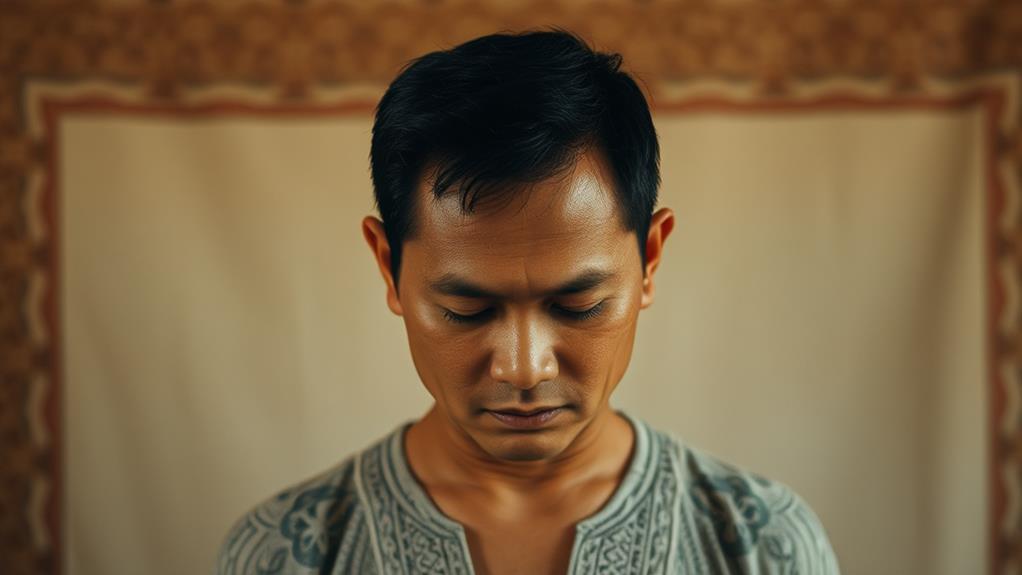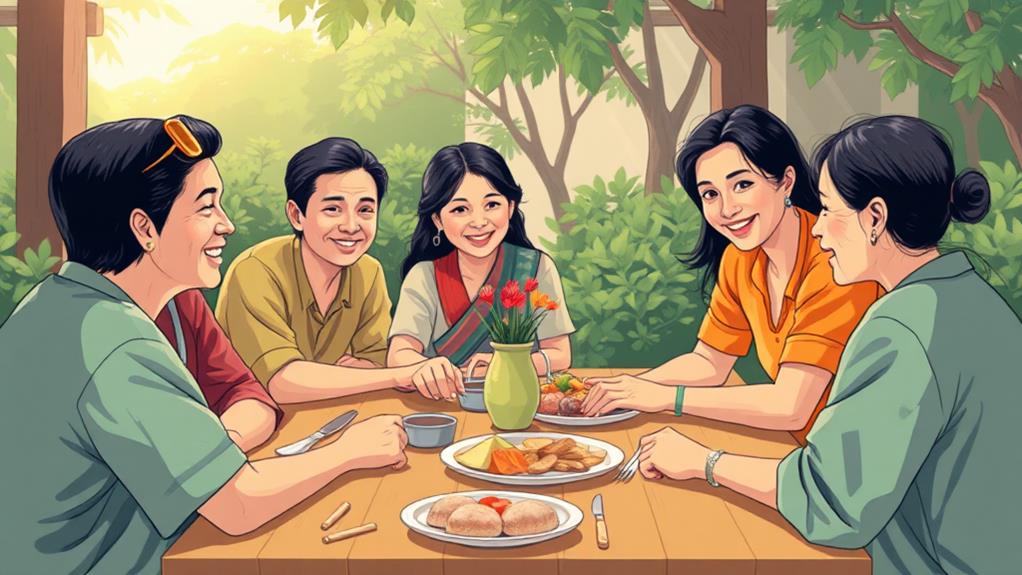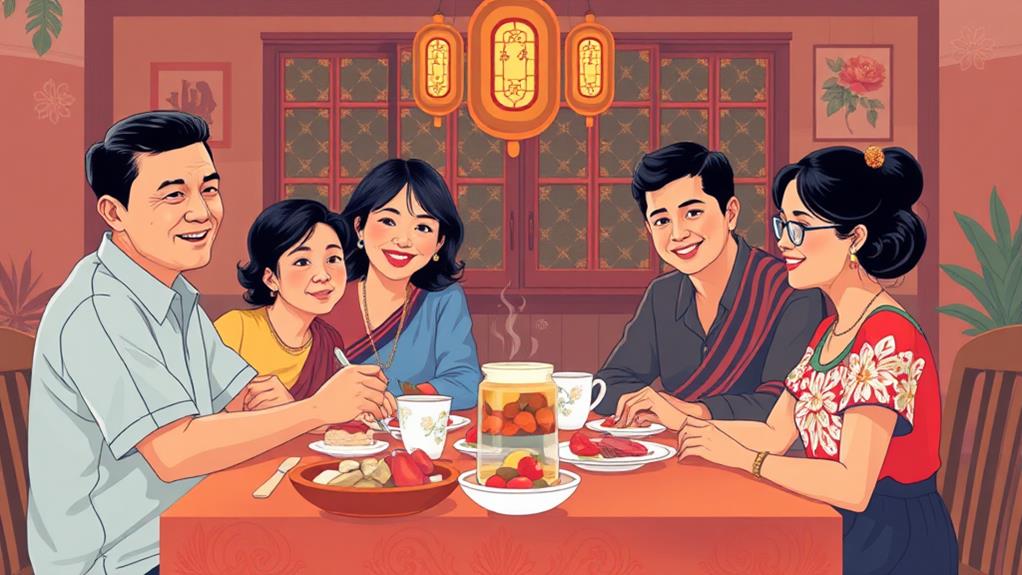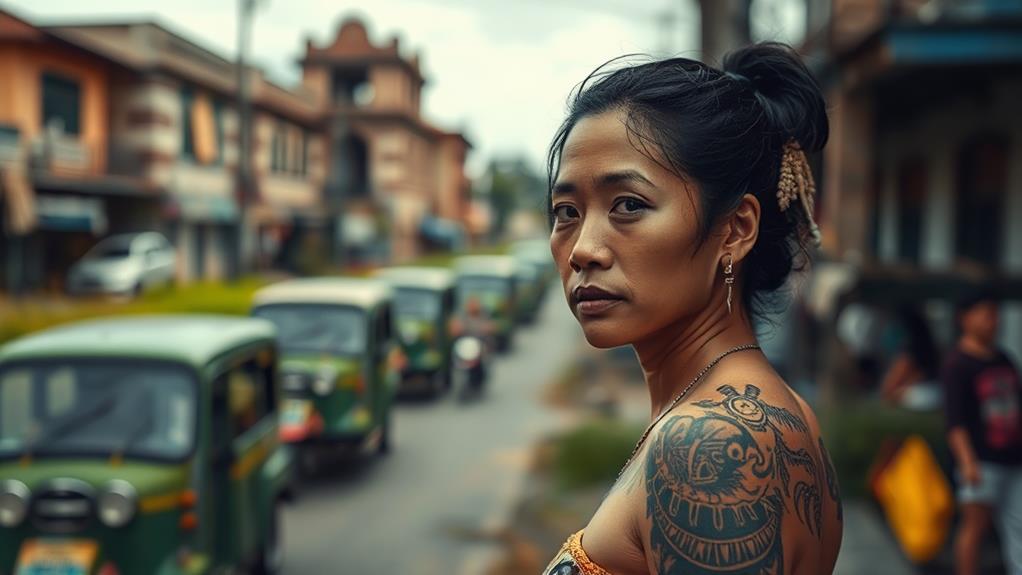Hiya: A Complex Aspect of Filipino Culture
Hiya promotes social harmony and respect for elders. This concept is deeply ingrained in Filipino culture and significantly influences social interactions, emotional intelligence, and relationships. It encourages self-awareness, empathy, and social responsibility, maintaining harmony within communities.
However, hiya can also have negative consequences. It can hinder open communication, particularly in romantic relationships, and create a culture of silence around personal struggles. For instance, individuals may hesitate to express their feelings or concerns to avoid causing shame or conflict.
Understanding hiya is crucial for Filipino identity and social dynamics. As you navigate the complexities of hiya, you'll discover its multifaceted nature, shaping your understanding of yourself and your relationships.
Recognizing both the positive and negative aspects of hiya is key to fostering healthy relationships and personal growth.
Understanding Hiya in Filipino Culture

Hiya: A Fundamental Aspect of Filipino Culture
In Filipino culture, hiya is a complex and multifaceted concept that influences social interactions. It can be loosely translated to "shame" or "modesty," but encompasses a broader range of virtues. Hiya shapes individual behavior, relationships, and decision-making, promoting self-control and consideration for others' feelings.
Positive Aspects of Hiya
On the positive side, hiya encourages self-awareness and emotional intelligence. It helps individuals navigate social situations with tact and empathy, avoiding actions that might cause embarrassment or hurt to others.
For instance, a person with hiya would refrain from boasting about their achievements to avoid making others feel inferior.
Negative Aspects of Hiya
On the negative side, hiya can lead to excessive self-consciousness and fear of criticism. It may cause individuals to hesitate or refrain from expressing their opinions or taking risks, fearing ridicule or rejection.
However, this doesn't mean that having hiya is inherently bad. Instead, it highlights the need for balance and self-reflection.
Importance of Hiya in Filipino Society
Having hiya is essential in maintaining social responsibility and upholding family and communal reputation. In Filipino culture, lacking hiya, or being "walang hiya," is considered a serious character flaw, equivalent to social disgrace and loss of honor.
This emphasizes the importance of cultivating hiya in individuals, particularly in family and communal settings.
Understanding Hiya in Filipino Identity
Understanding hiya is crucial in grasping the intricacies of Filipino cultural identity and social dynamics.
Family and social responsibility play a significant role in shaping individual behavior, and hiya is a key virtue that reinforces these values.
Historical Development of Hiya
Hiya's historical roots date back to pre-colonial Filipino society, where social behavior and morality were largely guided by communal relationships and expectations. During this time, hiya was shaped by indigenous practices and values that emphasized communal harmony and respect for authority.
Colonial influences significantly impacted the understanding and significance of hiya. Scholars like Bulatao and Rafael have shown how Spanish colonization introduced new values and norms that blended with existing indigenous practices, resulting in a complex interplay of shame and embarrassment within social interactions.
Hiya evolved as a moral compass guiding behavior and interpersonal relationships. As explored by Mercado, hiya's philosophical elements highlight its role in regulating social behavior and promoting harmony within communities.
For example, hiya can prevent individuals from engaging in behaviors that may offend others or disrupt social balance.
The meaning and significance of hiya continue to evolve in response to changing societal norms and values. As younger generations challenge traditional interpretations, academic discourse surrounding hiya reflects its ongoing adaptation to new social contexts.
The Role of Hiya in Social Harmony

Hiya: The Social Glue That Holds Filipino Communities Together
In Filipino social circles, hiya plays a crucial role in maintaining harmony within communities. This cultural value influences how individuals interact with one another and conform to cultural norms, ensuring that individuals conform to societal expectations and fostering cohesive interpersonal relationships.
Guiding Behavior and Social Interactions
Hiya serves as a moral compass, shaping the dynamics of family and peer relationships. For instance, in Filipino families, children are taught to show respect to their elders by using polite language and proper manners, such as addressing them with "po" or "opo." This emphasis on respect helps maintain harmony and strengthens family bonds.
Preserving Family Reputation
The importance of hiya reinforces the significance of family reputation and communal support in promoting social stability. In Filipino culture, family reputation is a highly valued asset, and individuals are encouraged to behave in a way that reflects positively on their family. This collective responsibility fosters a sense of unity and cooperation within communities.
Fostering a Culture of Respect
Hiya encourages individuals to prioritize respect and politeness in their interactions, creating a culture of respect and consideration. For example, in the Philippines, it's customary to use formal titles such as "Sir" or "Ma'am" when addressing authority figures or older individuals, demonstrating respect and deference.
This emphasis on respect helps build trust and strengthens social relationships.
Hiya and Personal Relationships
Hiya's Impact on Romantic Relationships
In romantic relationships, hiya can prevent open communication about sensitive topics, such as partner abuse, due to fear of causing shame for oneself or one's family. This reluctance to address issues can lead to unresolved conflicts and unhealthy relationship dynamics.
For instance, a person may hesitate to discuss infidelity or domestic violence because they fear it will bring shame to their family or community.
Hiya's Influence on Parent-Child Relationships
In parent-child relationships, hiya reinforces expectations of obedience and respect, emphasizing the importance of maintaining family honor and societal reputation. This can lead to a culture of silence, where personal issues are swept under the rug to avoid causing shame.
For example, a child may hesitate to discuss their struggles in school or personal problems with their parents because they fear it will reflect poorly on the family.
Hiya's Role in Gender Dynamics
Hiya is deeply intertwined with gender roles, influencing courtship and family dynamics. Women are expected to exhibit modesty and restraint, while men face pressure to uphold hiya in public settings.
For instance, in traditional Filipino culture, women are expected to be reserved and demure, while men are expected to be proud and strong.
Impact of Hiya on Mental Health

Hiya's Devastating Impact on Mental Health
Embracing the weight of hiya can have severe consequences on mental health, as individuals prioritize avoiding shame over seeking help or discussing sensitive topics.
Internalized Shame
The emotional experience of hiya leads to feelings of inadequacy and low self-esteem, negatively impacting mental well-being.
For instance, an individual may feel ashamed of their mental health struggles, causing them to doubt their self-worth.
Silence and Stigma
Fear of causing hiya inhibits open discussions about sensitive topics, such as partner abuse, leading to a culture of silence that exacerbates mental health issues.
This silence can prevent individuals from seeking help, allowing their mental health to deteriorate further.
Social Pressure
The pressure to conform to societal expectations related to hiya creates anxiety and stress, as individuals prioritize social acceptance over personal well-being.
For example, someone may avoid seeking therapy to avoid being judged by their community.
Hiya's Impact on Filipino Culture
In Filipino culture, the stigma surrounding discussions of mental health is compounded by the concept of hiya, often preventing individuals from seeking help.
This can have severe consequences, particularly for women, who may experience heightened mental health challenges due to the societal emphasis on modesty and restraint.
Hiya in Modern Filipino Society
Hiya's Influence on Interpersonal Relationships
In modern Filipino society, hiya continues to play a significant role in shaping social interactions. Individuals strive to maintain a good reputation and avoid behaviors that may bring shame to themselves, their family, or community. For instance, you may choose to refrain from expressing your opinions openly to avoid conflict or criticism.
The Impact of Social Media on Hiya
The rise of social media has introduced new challenges to traditional standards of behavior. Younger generations are more likely to express themselves individualistically, leading to a redefinition of what's considered shameful. This shift has created a sense of tension between traditional values and modern norms.
The Dark Side of Hiya
However, hiya can have negative consequences, such as inhibiting victims of partner abuse from seeking help or speaking out about their experiences due to fear of causing shame.
Additionally, hiya contributes to the stigma surrounding mental health and personal challenges, leading individuals to prioritize social harmony over open discussion and self-expression.
Navigating Hiya in Modern Filipino Society
As you navigate these complex dynamics, hiya remains a powerful force shaping relationships and interactions. Understanding the nuances of hiya is crucial in modern Filipino society, where maintaining a balance between individuality and social harmony is essential.
Cultural Significance of Hiya

Hiya: A Foundation of Filipino Culture
Hiya is a vital aspect of Filipino culture, emphasizing social responsibility and the importance of maintaining social harmony within communities. This concept is deeply rooted in Filipino values, influencing various aspects of social interactions and relationships.
Social Consequences of Lacking Hiya
Being walang hiya (shameless) is considered one of the worst character traits in Filipino culture, leading to social disgrace and ostracism. When individuals lack hiya, they're viewed as irresponsible and disrespectful, causing harm to their reputation and relationships.
Utang na Loob and Hiya
Hiya is closely linked to utang na loob (debt of gratitude), which is a moral obligation towards others. Cultural narratives surrounding hiya stress the importance of repaying debts of gratitude, highlighting the significance of shame and moral responsibility in Filipino society.
Hiya in Interpersonal Relationships
Hiya fosters politeness, respect, and a strong sense of collective identity among Filipinos, influencing interpersonal relationships and community dynamics. By practicing hiya, individuals demonstrate their commitment to social harmony and responsibility, strengthening bonds within their communities.
The Duality of Hiya as Virtue and Emotion
Hiya represents a delicate balance between virtue and emotion in Filipino culture. This balance influences how individuals navigate personal and societal expectations.
As a virtue, hiya promotes self-control and respect for others. It encourages self-restraint, respect for others, and smooth interpersonal relationships (pakikisama), helping to maintain social harmony and avoid conflict.
This valued trait is essential for social cohesion.
As an emotion, hiya can evoke feelings of shame, guilt, and anxiety. If left unaddressed, these feelings can be debilitating.
Recognizing the distinction between hiya as a virtue and hiya as an emotional experience is crucial for understanding Filipino virtue ethics.
In Filipino communities, self-esteem (amor propio) and social respect are deeply intertwined. Understanding hiya's duality is essential for addressing the stigma surrounding mental health and personal issues.
Hiya's Influence on Filipino Identity

Hiya profoundly influences Filipino identity, serving as a moral anchor that steers personal behavior, social interactions, and community dynamics.
Cultural values: Hiya is deeply intertwined with dangal (honor) and kapwa (shared identity), reinforcing a collective sense of identity among Filipinos. For instance, in Filipino culture, respecting elders and authority figures is seen as a way to uphold hiya, which in turn strengthens the sense of community and social bonds.
Gender roles: Hiya influences gender roles, where women are expected to embody modesty and restraint, while men face pressure to uphold social dignity in public settings. For example, in traditional Filipino families, women are often expected to dress modestly and avoid drawing attention to themselves, while men are expected to be confident and assertive in public.
Collective sense of identity: A strong emphasis on hiya contributes to a collective sense of identity, where individuals prioritize the group's reputation over personal desires. This can sometimes lead to internalized shame and social pressure, such as feeling embarrassed when a family member makes a mistake in public.
How does the concept of “Mano Po” relate to the Filipino sense of shame and dignity?
The “mano po gesture respect elders” is a traditional Filipino custom that reflects the deep-rooted values of respect for elders. The concept of “Mano Po” is intertwined with the Filipino sense of shame and dignity, as it emphasizes the importance of honoring and showing reverence to older individuals within the community.
The Evolution of Hiya in Contemporary Times
Hiya's Evolution in Contemporary Times
Hiya has undergone significant changes in recent years, driven by shifting cultural values and technological advancements. Younger generations are redefining hiya, embracing individualism and challenging traditional notions of shame.
Social media has played a significant role in this shift. It has created new standards for behavior that sometimes conflict with traditional Filipino values, such as the importance of group harmony over individual expression.
However, social media has also provided a platform for discussions about personal identity and social issues, allowing for a more nuanced understanding of hiya.
Urbanization and globalization have contributed to a shift in cultural values. In urban areas, individual expression can take precedence over communal harmony, leading to a more balanced approach to hiya.
Research shows that younger Filipinos are advocating for greater freedom to express personal truths and experiences while still maintaining cultural identity.
This evolution reflects a growing awareness of the dual nature of hiya. Hiya plays a crucial role in fostering social responsibility, but it can also hinder open communication.
Younger generations are recognizing the importance of balancing social responsibility with individual expression.
Frequently Asked Questions
What Role Does Hiya Shame Play in Filipino Culture?
Hiya shame is a vital component of Filipino culture, influencing social expectations and personal identity. It plays a crucial role in shaping community relationships by upholding moral values and family honor to avoid shame and maintain cultural pride.
For instance, in Filipino families, children are taught from a young age to prioritize family reputation and avoid bringing shame to their loved ones. This emphasis on hiya shame encourages self-control and consideration for others' feelings, which helps maintain harmony within the community.
Hiya shame also serves as a social regulator, inhibiting open discussions about sensitive topics. As a result, Filipinos often avoid discussing controversial issues, such as politics or personal problems, to prevent conflict and maintain social harmony.
This cultural norm is deeply rooted in the importance of avoiding shame and preserving community relationships.
By internalizing hiya shame, Filipinos are motivated to conform to social norms and prioritize harmony and reputation above personal desires. For example, a Filipino individual may choose not to pursue a career in the arts if their family doesn't approve, in order to avoid bringing shame and maintain family honor.
This cultural value emphasizes the importance of community over individuality, shaping the way Filipinos navigate their personal and professional lives.
What Is the Filipino Concept of Hiya?
In Filipino culture, hiya is a complex concept that combines shame, modesty, and self-control.
Hiya is deeply rooted in moral values, emphasizing personal integrity and respect for others. This cultural value guides daily interactions and relationships, ultimately shaping one's identity as a Filipino.
Maintaining dignity while avoiding shame is a delicate balance that influences social behavior, emotional expression, and even family dynamics.
Hiya affects how Filipinos express emotions and interact with others. For instance, it teaches individuals to be humble and avoid boasting about their achievements.
This humility helps maintain harmony in relationships by preventing conflicts and promoting mutual respect. By understanding hiya, one can better navigate social situations and build stronger relationships within the Filipino community.
What Is the Shame Culture in the Philippines?
In the Philippines, a shame culture prevails, where social conformity and familial expectations greatly impact daily life.
This culture prioritizes public perception, making individuals more concerned with avoiding shame than taking personal accountability.
When individuals fail to meet expectations, they experience a strong emotional response, leading to feelings of guilt and remorse.
For example, in Filipino families, children are often expected to pursue careers that their parents deem respectable, such as medicine or law. If a child chooses a different path, they may be viewed as bringing shame to the family, leading to feelings of guilt and pressure to conform.
This cultural identity is deeply rooted, shaping behavior and interactions to prioritize group harmony over individual desires.
What Is Hiya for US Filipinos?
Hiya is a complex emotional response to social expectations that influences relationships and self-perception among US Filipinos.
It is the delicate balance between personal integrity and communal values, where upholding ethical behavior, avoiding shame, and maintaining dignity are crucial.
Hiya encourages politeness, respect, and support among family and friends, as individuals strive to conform to cultural norms while staying true to themselves.
For example, in Filipino culture, hiya can manifest when an individual feels embarrassed or ashamed of their actions, leading them to avoid certain situations or conversations to maintain social harmony.
This emotional response shapes interactions and self-perception, as individuals navigate their cultural identity and social relationships.